James de Havilland, our independent machinery tester, test drove the two seater version of the UTX
Our thanks go to Barbury Shooting for hosting.

James de Havilland
Technical Freelance WriterFirst impressions
Offering clay pigeon shooters a huge variety of challenges, the team at Barbury Shooting use UTVs all-year-round, all day and every day. So who best to visit when time came to trial the Toro Workman UTX? I got my answer to this in a roundabout way. The demo Workman UTX was used to lug boxes of clays, tow and move various traps into position, carrying personnel and just being employed to help ensure a busy shoot ran smoothly.
This meant the Workman was in action pretty much non-stop, with some of the work tougher than expected. Scaling some steep slopes, crossing rough ground and tackling sodden turf in slippery conditions is not much of a UTV challenge but it is a stiff ask when the vehicle is loaded with boxes of expensive clays that can be damaged if roughly handled; the job is more demanding than you might think. Was I impressed by the machine’s abilities? More importantly, was the team at Barbury impressed? Absolutely.
When’s it my turn!
As the Toro Workman UTX was driven up to me, I expected the two-man team from Barbury Shooting, based near Swindon, to jump out and let me take a drive. But Connor and Josh just stopped to let us know they were off to refill the traps at one of the club’s eight stands, the vehicle’s rear platform loaded with boxes of clays and a couple of batteries used to power the traps. The latter were hungry for fresh targets, despite it being a ‘quiet’ Tuesday.
“On a typical weekend we are running around pretty much non-stop and during competitions and club shoots we and the rest of the team are all on the go full time. It gets really busy”, says Connor. “We will just drop these boxes off and reload the traps on Paddock ground. See you there”. With that, the pair drove off.
The whole idea of a ‘test drive’ is of course to get an idea of how a given machine does its job. In this instance, Connor and Josh were pretty much doing this for me. Over a couple of hours, the Workman was scurrying between Barbury’s Top Meadow grouse, Rosebowl high pheasant, Middle pheasant/partridge, Oval pheasant/partridge and Skeet partridge ‘ranges’, each having between four and eight traps in action on the day. Not only does each trap magazine cartridge hold 400 clays, but the traps also need checking for consistent performance and adjusting to suit prevailing conditions. Every morning, each of these automatic traps needs to be towed to each location, and they may be moved to different locations during the day. The aim? To provide shooters with a huge variety of challenges.
One set of traps we viewed in action had to be accessed via a steep incline, thus providing an elevated throwing platform. Getting access to these traps to refill them was not a challenge for the UTX. In all-wheel drive it just ambled up the slope, drama free. Josh decided to repeat the climb with drive just to the rear wheels, this again barely taxing the vehicle’s traction over the damp grassy track.
One word summed up Connor and Josh’s time with the Toro Workman. Impressive. By the time it was my turn to have a drive, the UTX was emptied of its third or fourth load of clays and the towing hitch removed. Unencumbered, I took the UTV for a blast and found it exactly what I expected. Comfortable, perky for a 25hp diesel, easy to manoeuvre and perfectly happy to drive over rougher terrain. As to its worth as a load carrier, it had proven itself, with ample space for a decent load on its rear platform.
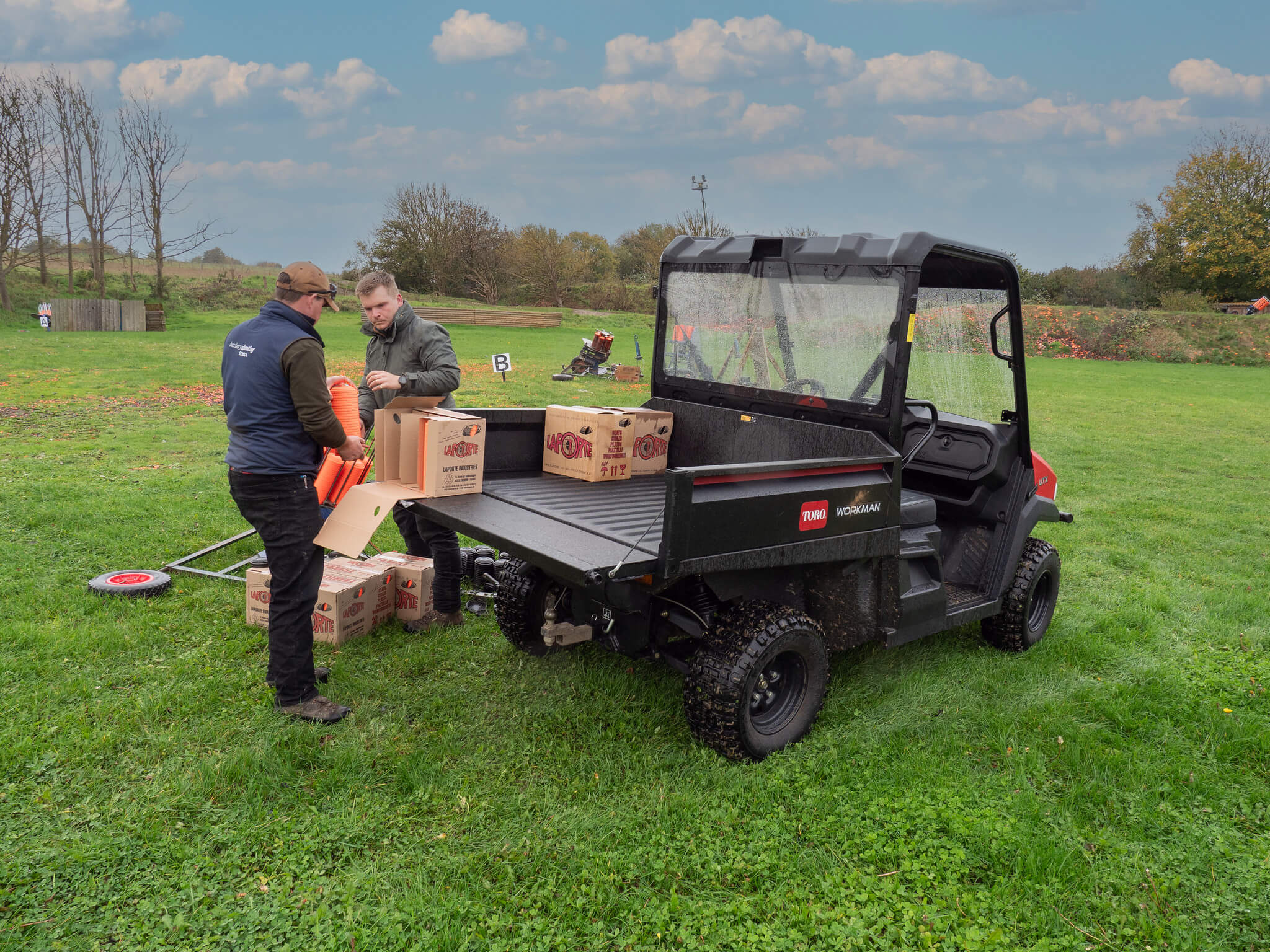
Boasting a weight capacity of 567kg, the size of the UTX platform is of equal importance. This was clearly demonstrated as we stacked boxes of clays. If the platform had been smaller, it would risk damage. The vehicle’s ride is also proving important. Excess jolts can potentially damage the clays, leading to them falling apart at launch. At least ten boxes of 150 clays per box can be safely moved on the UTX platform with space for a couple of vehicle size 12v batteries per load too.
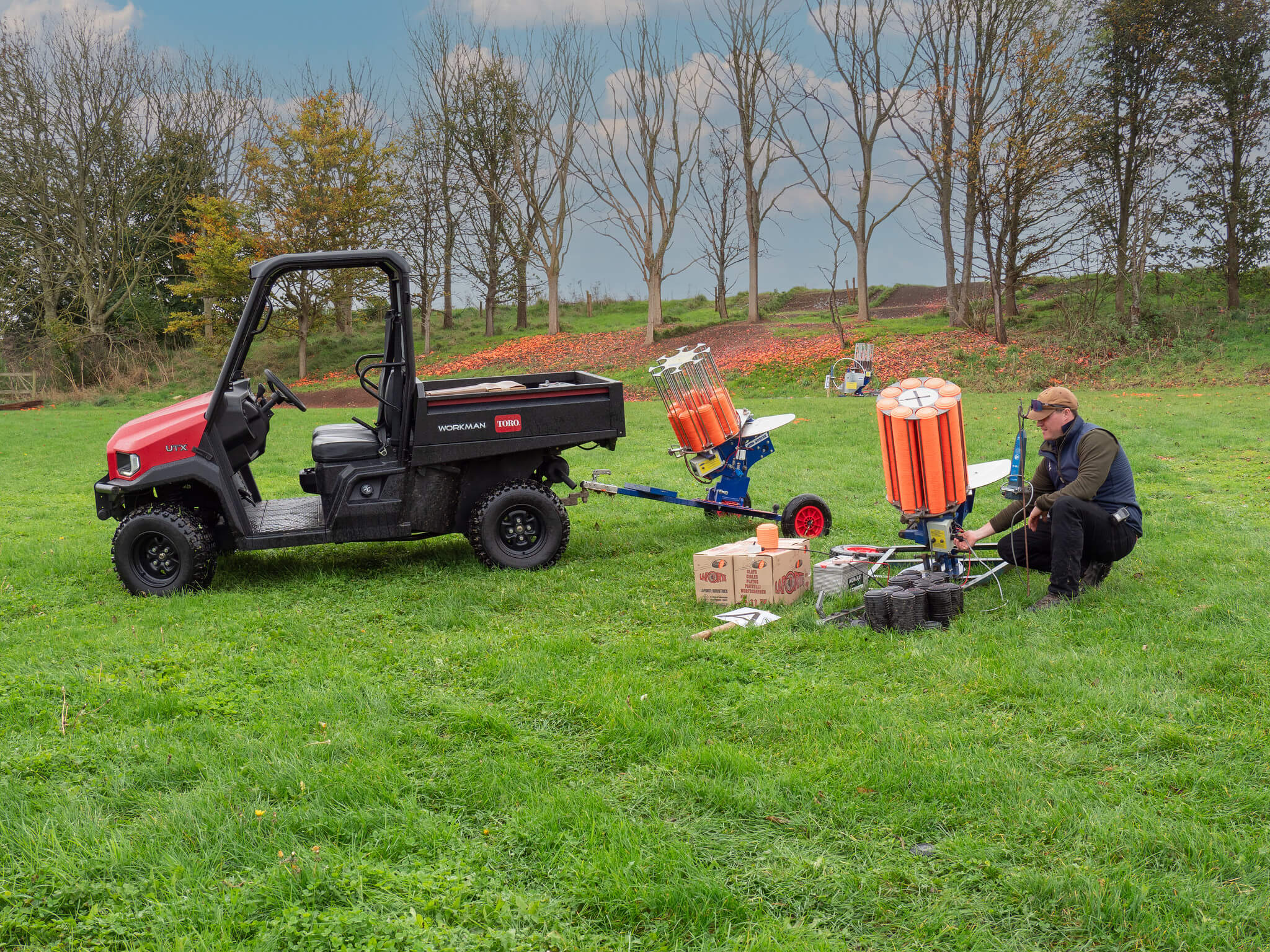
Front and rear 2ins/5cm tow receivers are fitted to the UTX. This enables the end user to choose between ball and clevis hitches that can be fitted to either end of the vehicle. Towing a trap at a leisurely pace to prevent damage proved an easy job for the Toro UTX, its three-cylinder 25hp Yanmar diesel engine no doubt sipping fuel as a result. Managers can peg the vehicles top speed incidentally, a useful feature to check driver enthusiasm in controlled environments. As it is, the UTX maxes out at 40km/hr for the diesel model, a top speed of 25mph suiting most off-road duties.
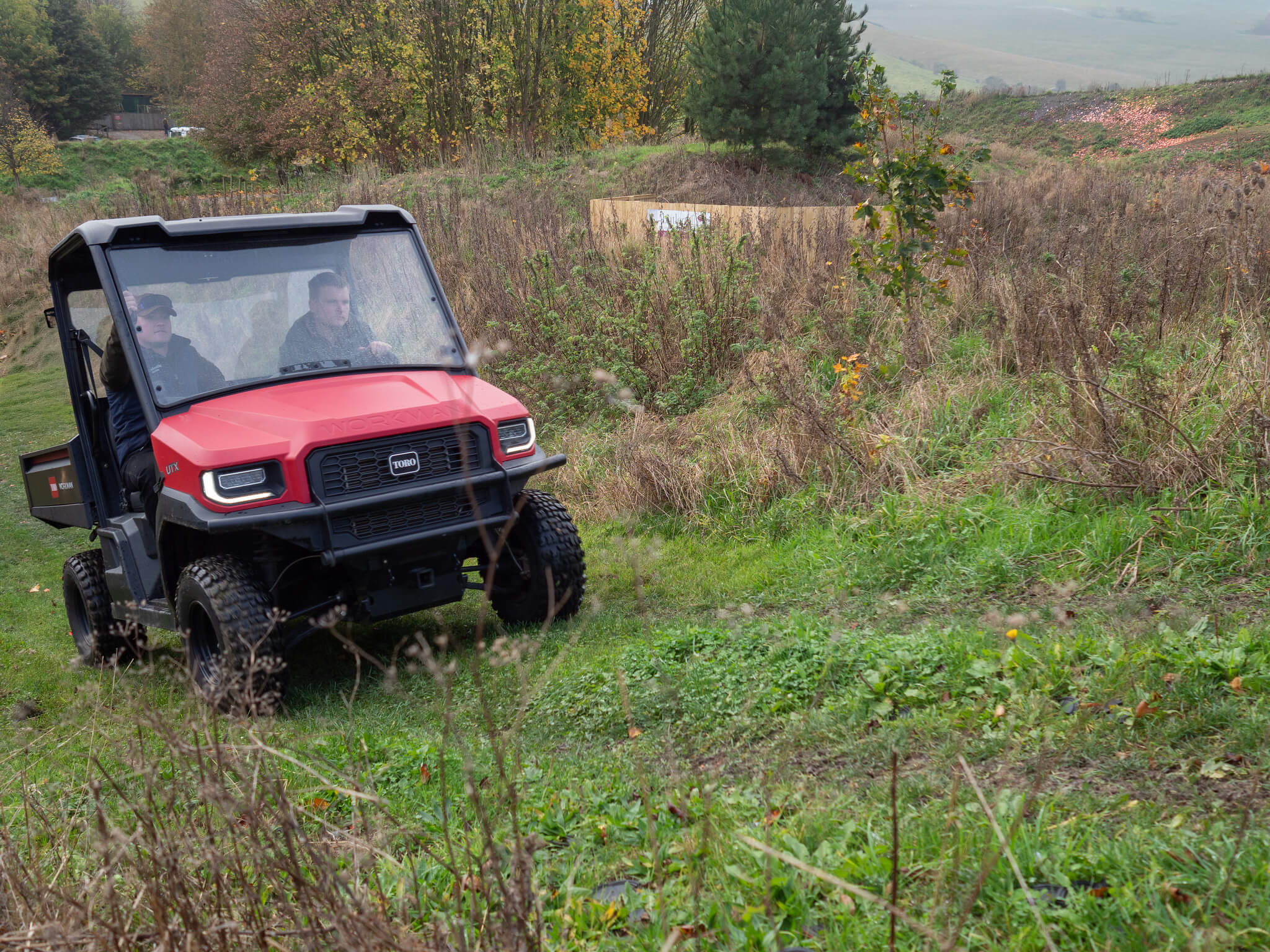
It is difficult to show an incline in a picture, but this climb was around 50% and proved a decent test of traction of the UTX in two-wheel drive. More aggressive tyre patterns are available, but the block tread fitted to the UTX proved well up to the task of climbing this grassy bank.
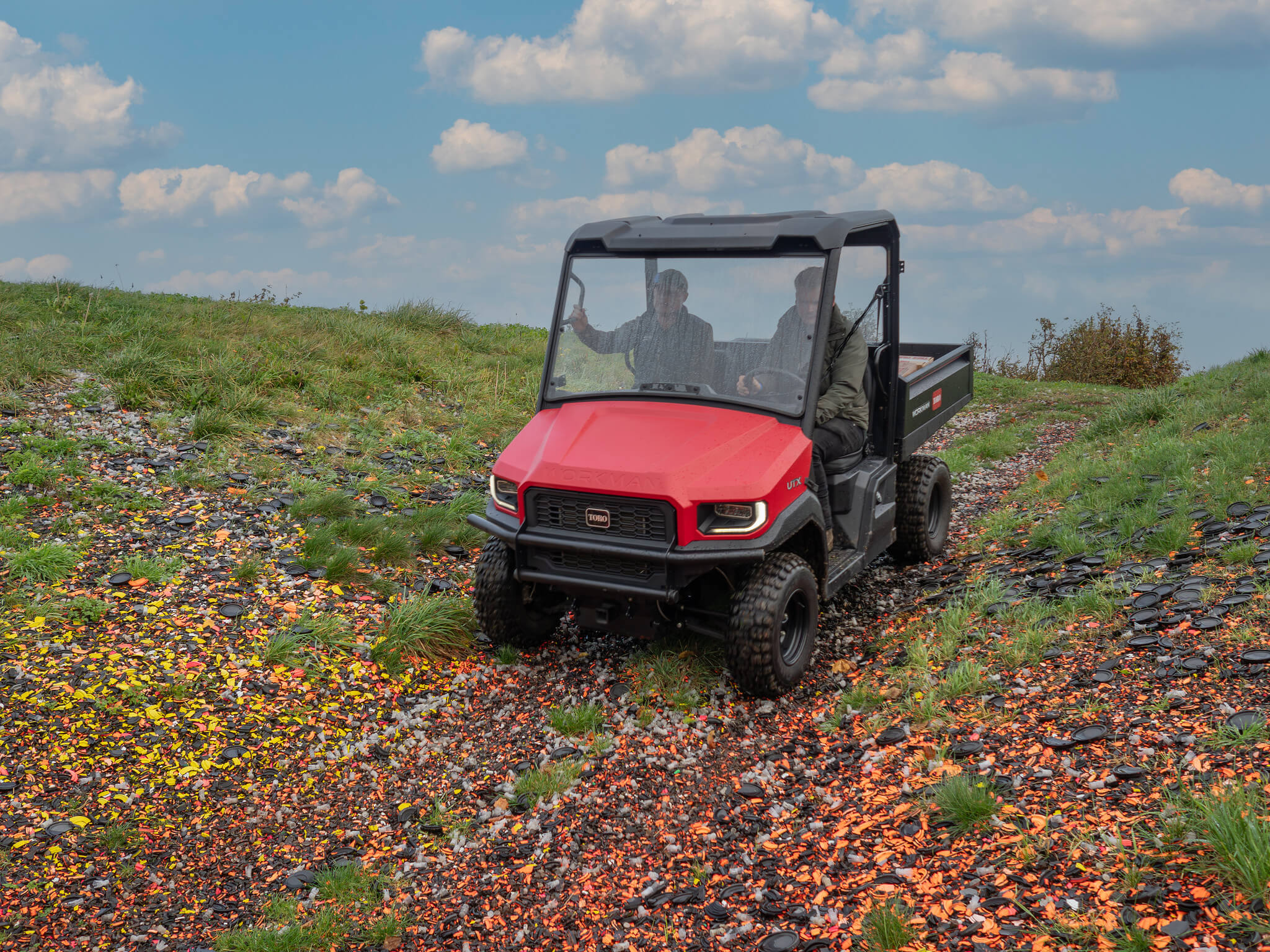
Like most small UTVs, the Workman UTX has a belt-drive constantly variable CVT dual range transmission. Simple and well-proven, this type of drive makes this type of UTV a doddle to drive, the set-up Toro uses proving extremely smooth in its pick-up. A standard belt CVT will offer little in the way of engine braking when descending a steep slope, so you do need to use the brakes to control your descent. Toro fit the UTX with discs on each wheel, with enough stopping power to comfortably slow the vehicle. A simple driving tip is to select low range before going down a steep slope and upping the engine speed. This will keep transmission engaged and is a useful way to control a heavy trailed load down a steep incline.
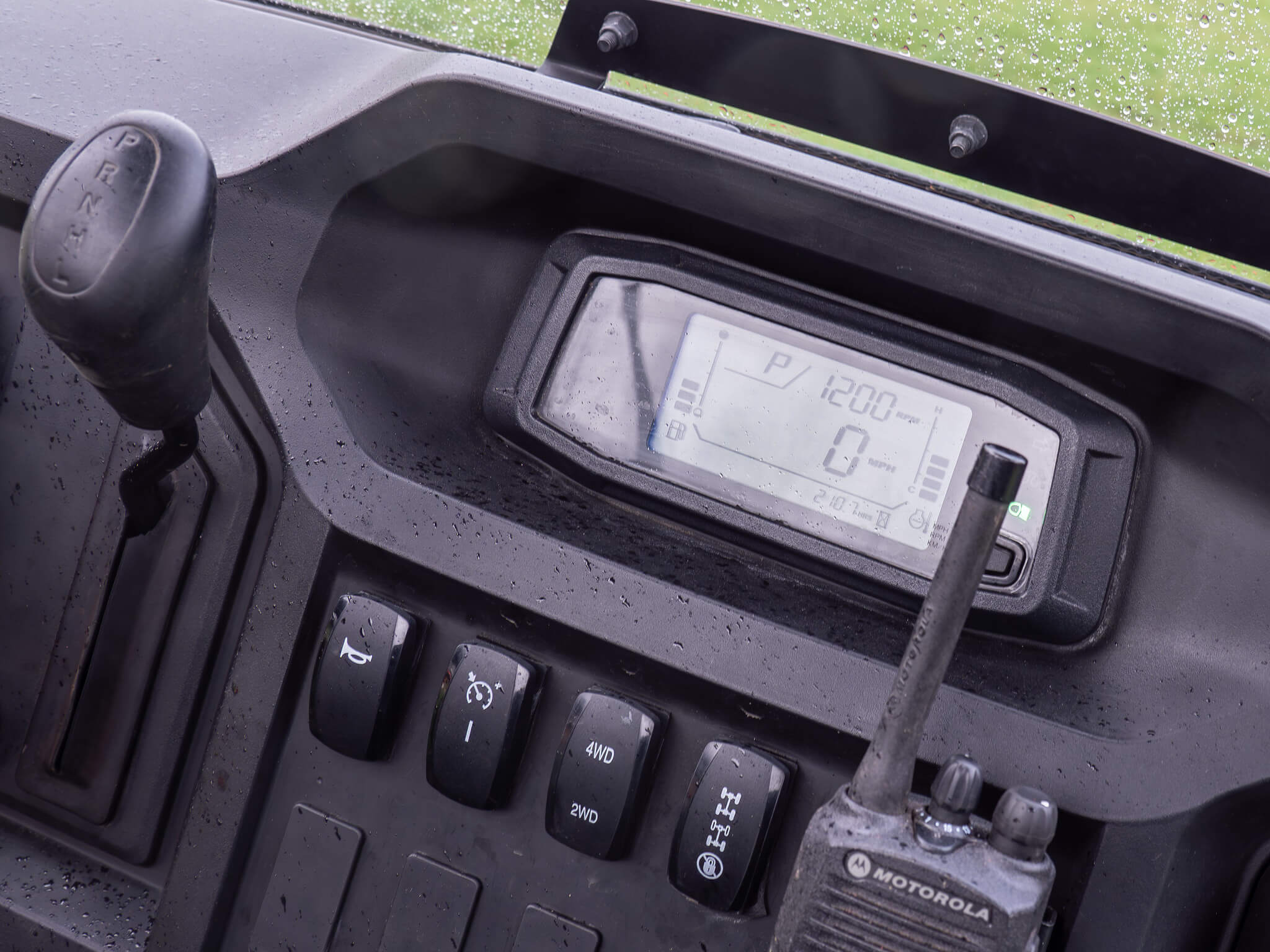
Selector for high/low range and reverse plus park looks after the transmission, with the digital display centre showing fuel level, engine temperature, selected gear range, speed, engine rpm and time. The horn, two- and four-wheel drive and differential locks are all controlled by rocker switches. Simple. The switch next to the horn button is a Toro UTX bonus feature. With this, the operator can dial in engine revs to deliver a fixed forward speed. A master control is also fitted to enable managers to set a maximum vehicle speed. Controlling the engine revs can ensure the UTX operates at lower noise levels, a real plus when working in locations to include schools and hospitals.
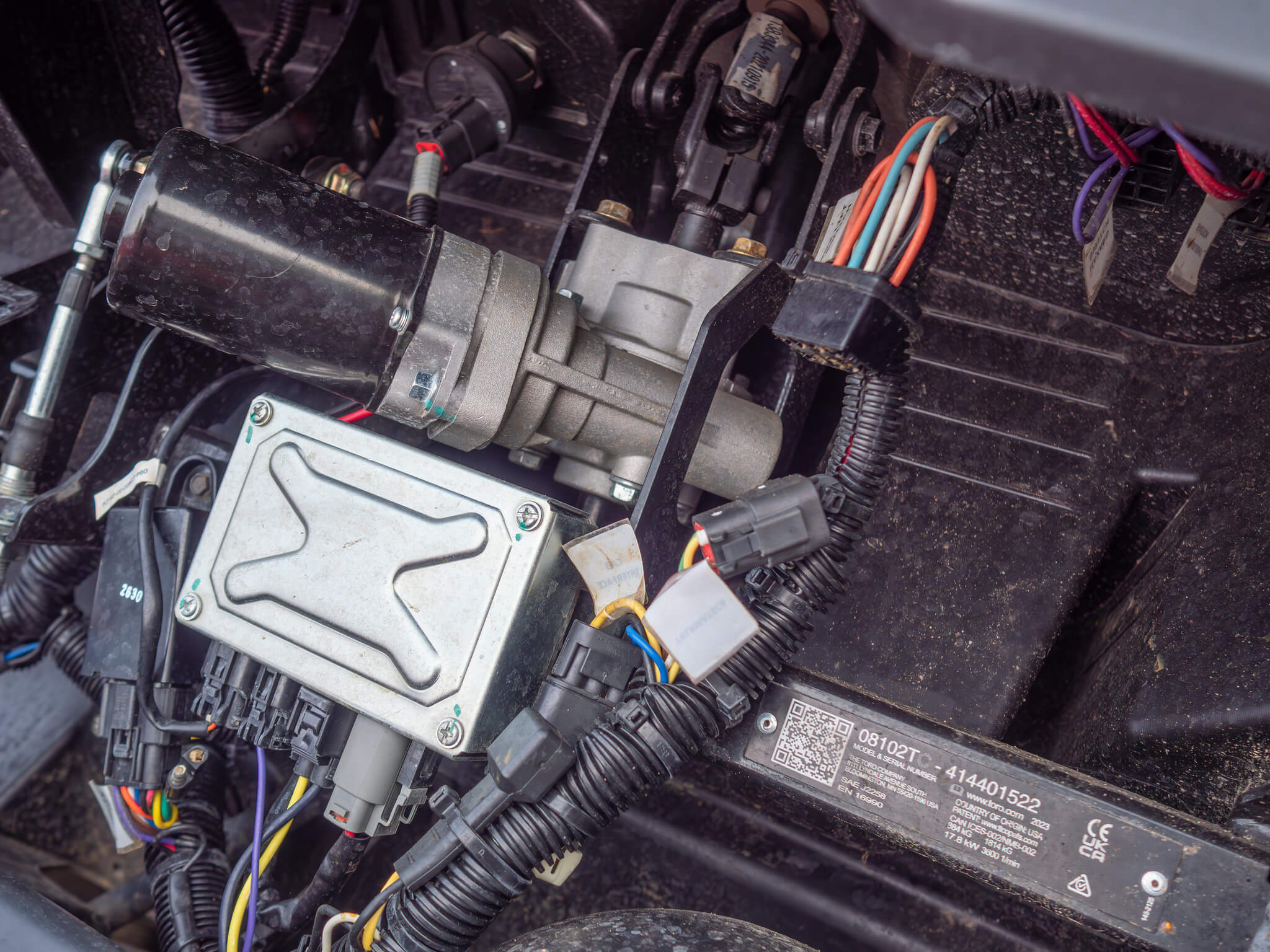
Electric power steering comes as a standard part of the UTX package. This has the obvious advantage of reducing the effort required to manoeuvre the vehicle but there is an added plus. Over rough ground, the system helps reduce kick-back if a front wheel hits a rut or obstacle, easing traversing rough ground.
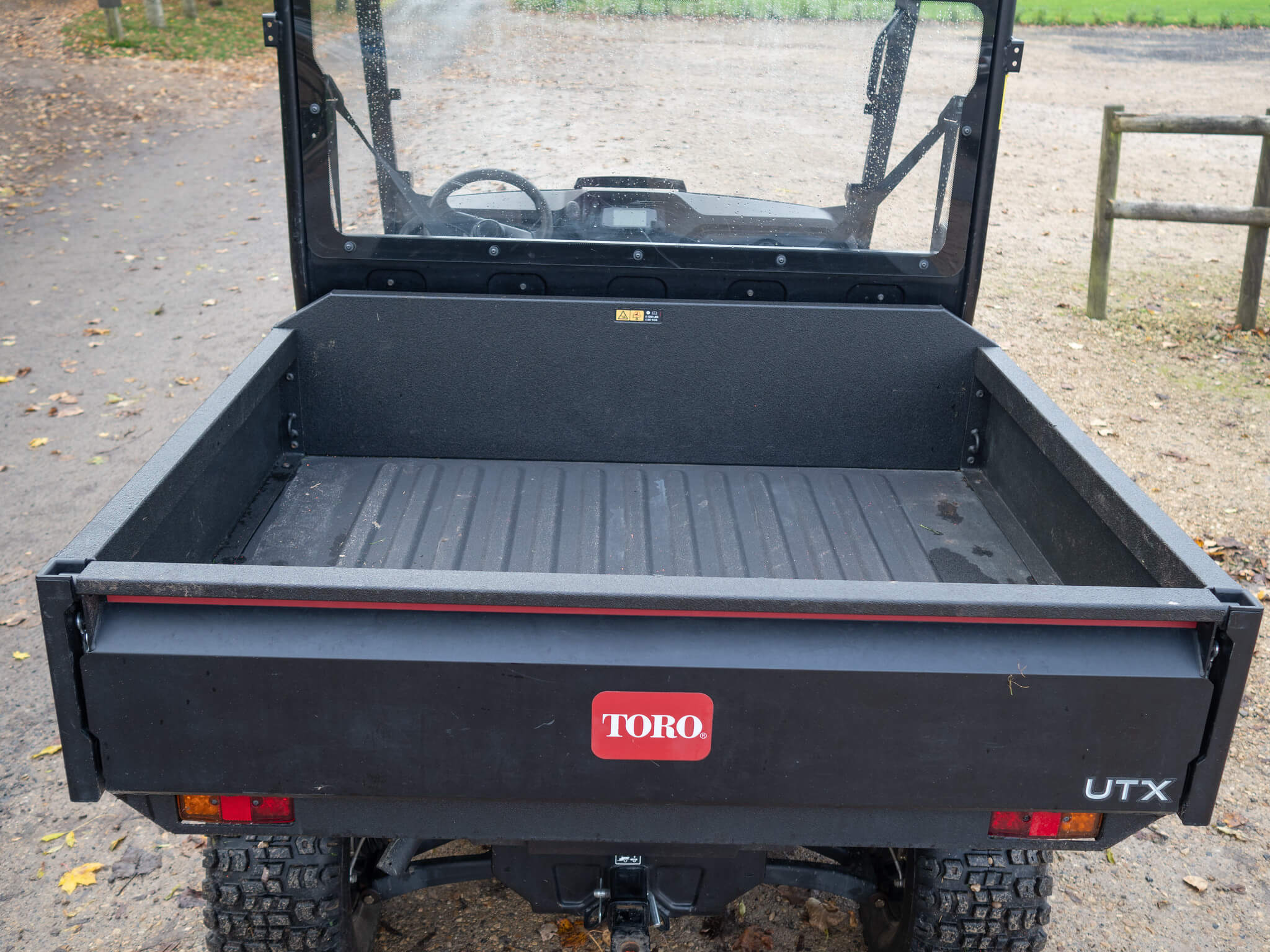
The steel cargo bed on the two-seat Toro Workman UTX is 1.13m wide, 1.42m long, with the sides rising to 0.28m. The rear tailgate is simply raised to unlatch, cables keeping it level with the platform form to extend the load area if required or unclipping to allow the tailgate to swing down. An electric tip system can be fitted, thus enabling the cargo bed to be used to easily discharge loads such as gravel. The crackle paint finish of the load area looks durable, fixed lashing points to secure awkward loads.
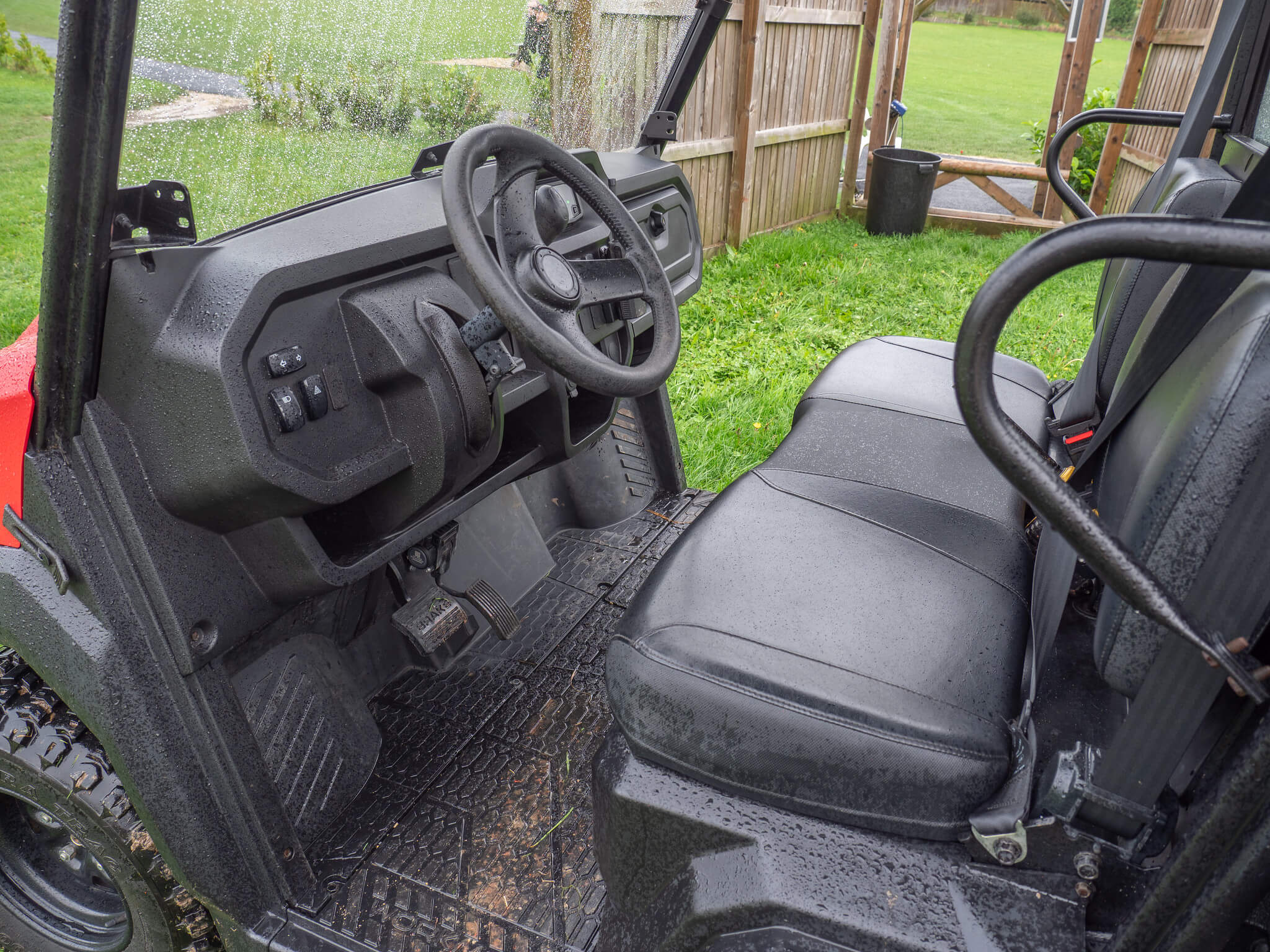
Toro offers the UTX in entry level form with just a roll frame, a roof and polycarbonate front and rear screens listed among options. A full cab with heater is also available. Inertia safety belts and bench seating for two is standard, as is a rake adjustable steering column. The UTX can be specified in long wheelbase form with a second row of seats to allow four-person transport, the load platform remaining the same size.
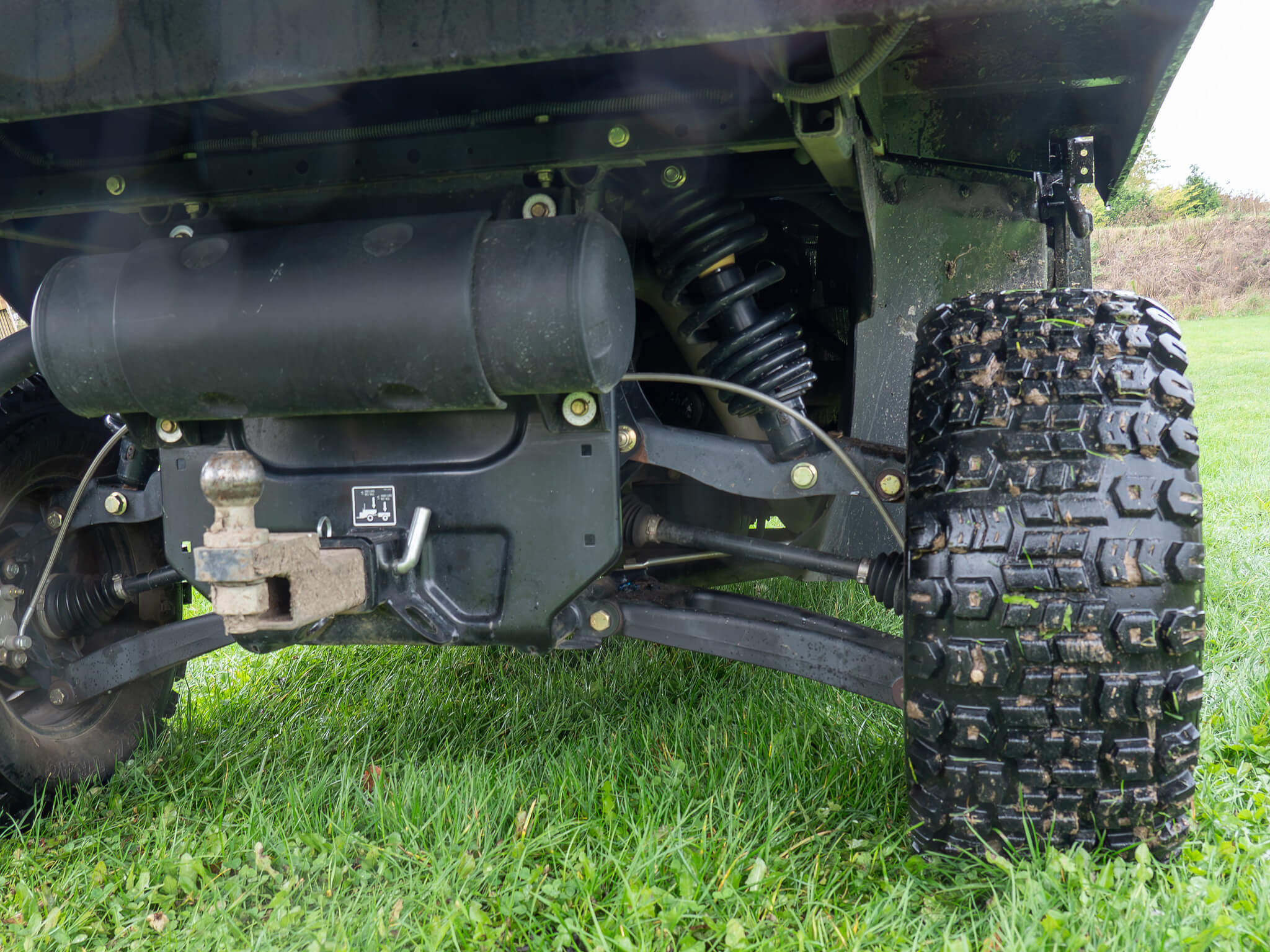
Double wishbone rear with adjustable coil and damper suspension provides a good ride for both platform load and the operator. Towing capacity is up to a generous 907kg, which combined with the 567kg platform capacity makes for some hefty haulage muscle. The hitch receiver is compatible with a wide range of push-fit couplings.
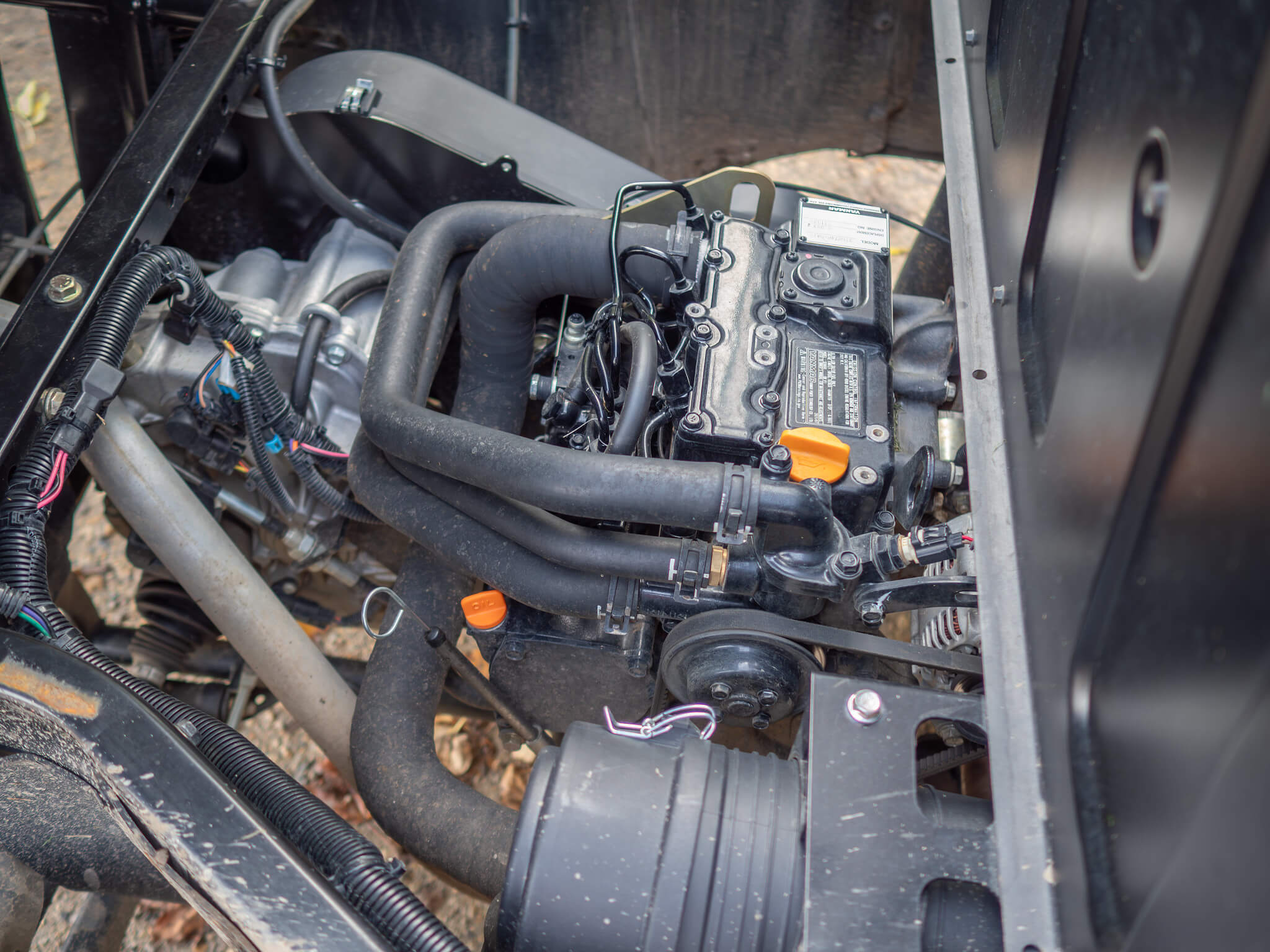
Rated at 25hp / 17.9kW, the three-cylinder 993cc Yanmar diesel does not require emission controls such as a DPF filter or AdBlue. Mounted below the tilting rear load platform ensures routine service access is good. An alternative Yanmar 998cc four-cylinder petrol engine is also available, this developing a hefty 40hp/29.8kW. Although this power unit will be less frugal than the diesel sipping 25hp engine, it will offer a big hike in performance to include the top speed increasing to 45mph.
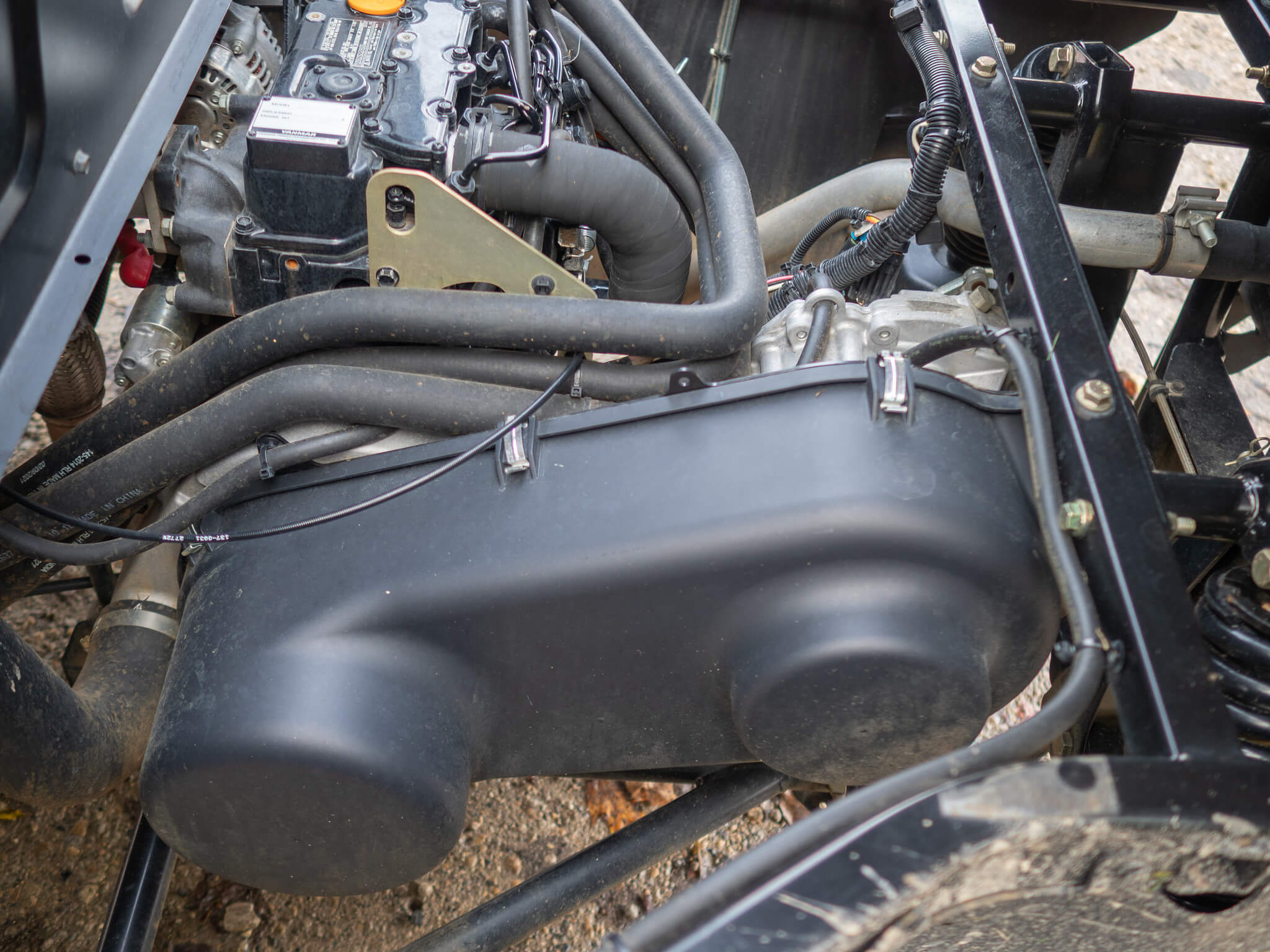
Simple belt CVT transmission follows a design proven for reliability and longevity. The UTX has two mechanical ranges, low and high, with park and reverse. In work, the transmission proved well suited to the engine’s power, with smooth pick-up and the ability to travel at a slower pace without excess engine revs.
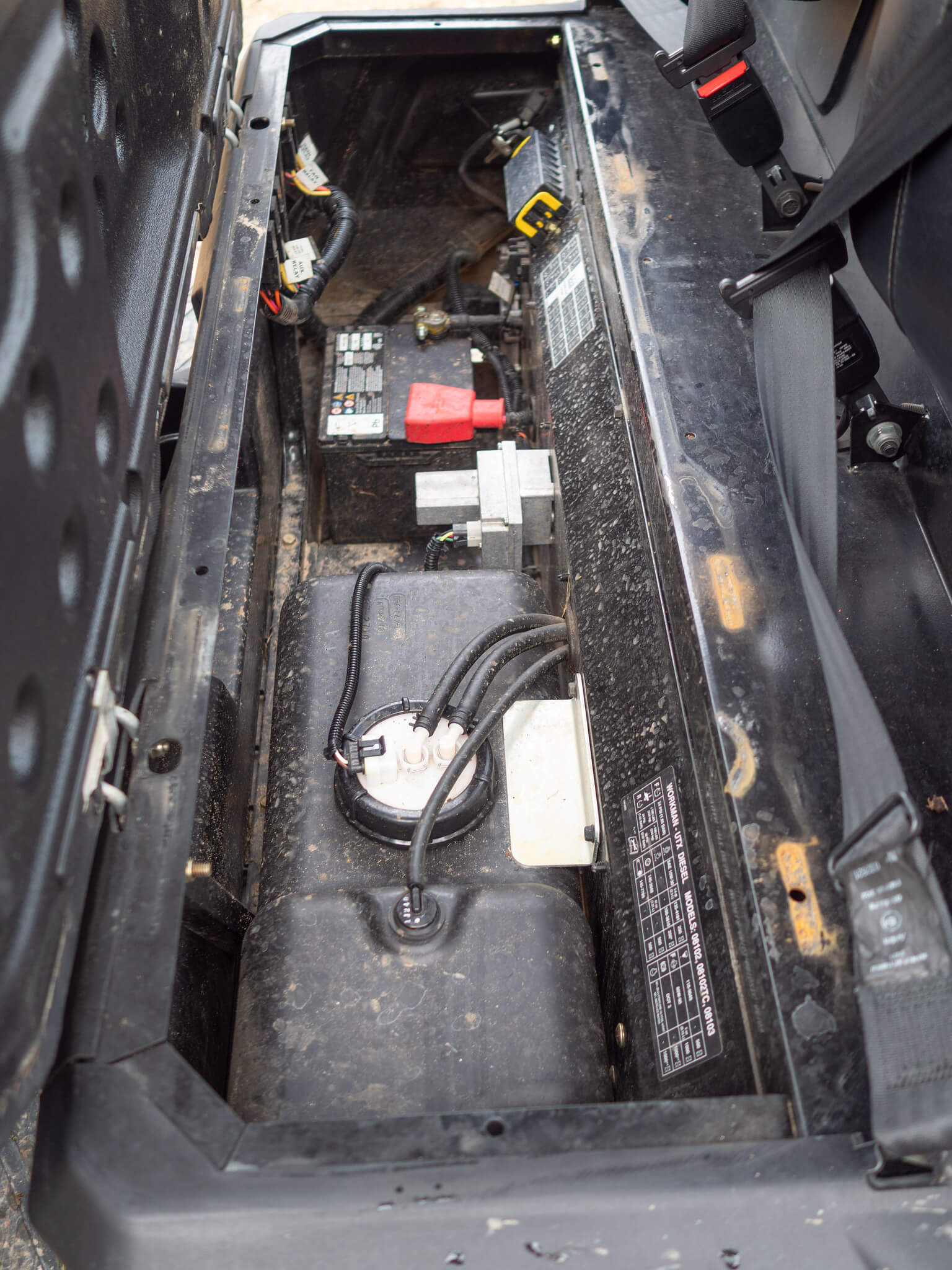
Both the battery and the generous 32litre fuel tank are positioned under the bench seat. Service access on the UTX is good, a plus for those looking to reduce operating costs.
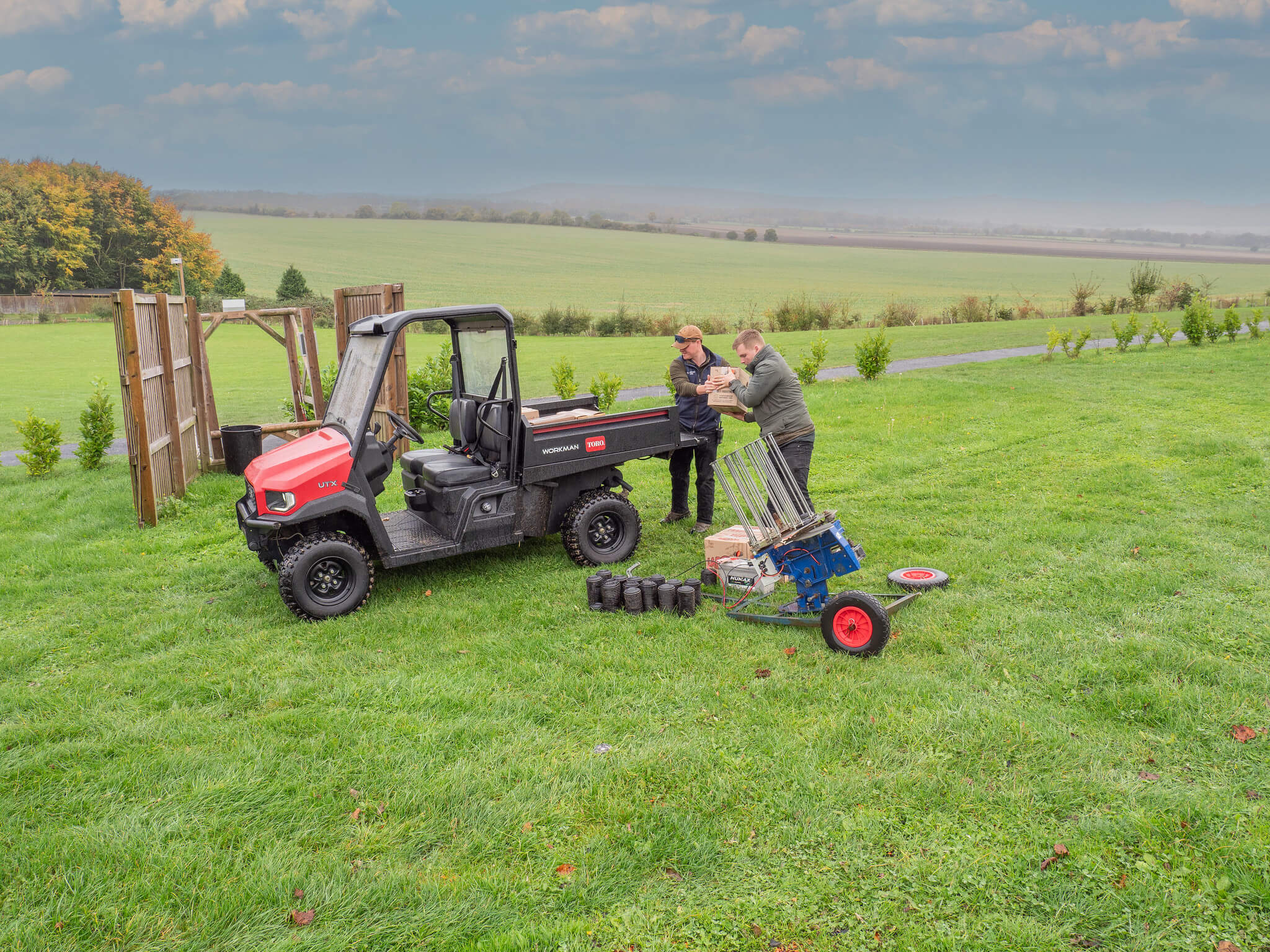
With each carousel on the automatic traps used at Barbury holding up to 400 clays, it is possible to keep them topped up without too frequent replenishment. But there is often the need to swap between clay types, shooters being able to select between black and painted types of different colours.
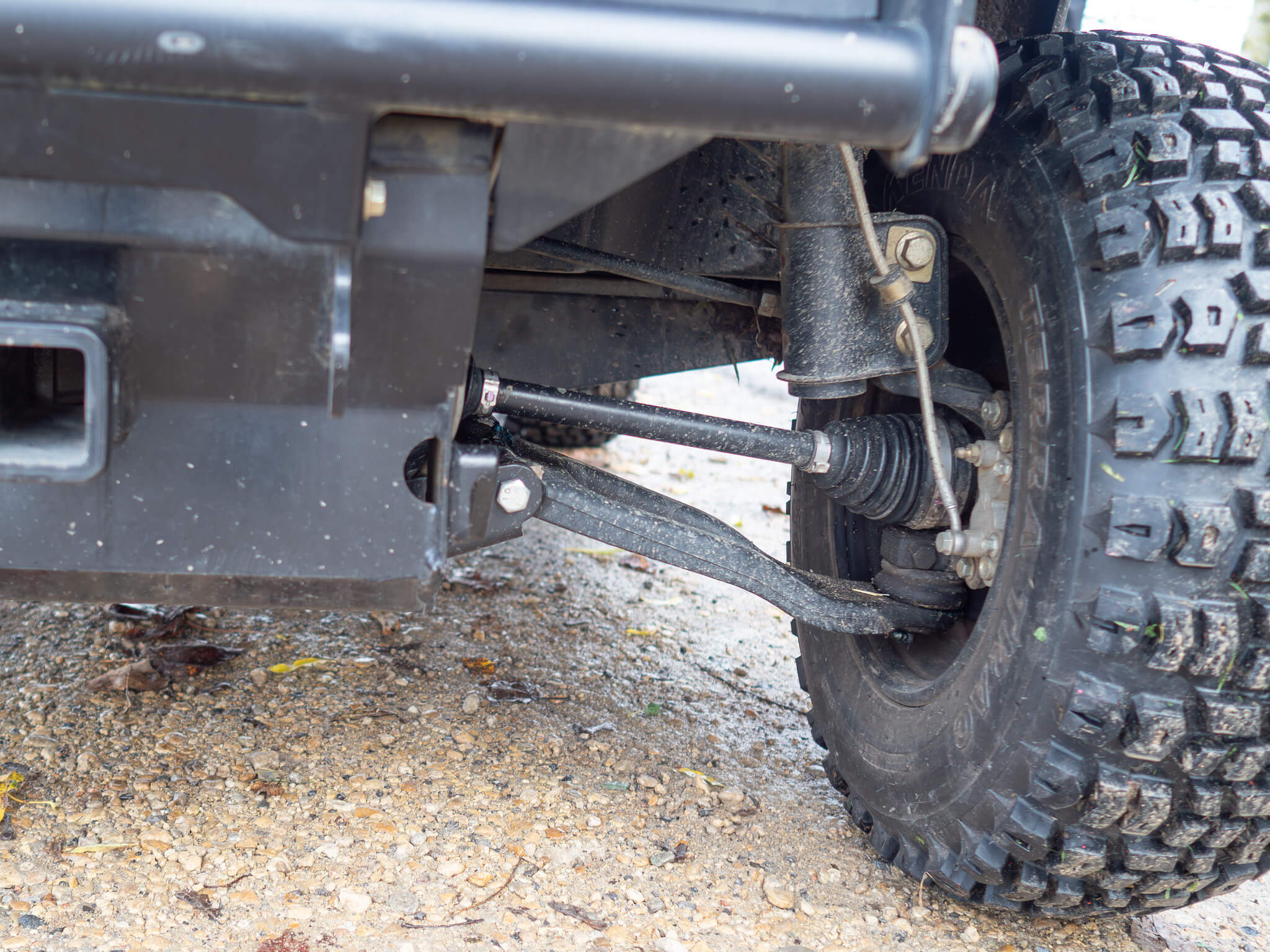
MacPherson strut suspension allows good articulation of the front wheels for the two-seater Workman UTX. Ground clearance is a decent 229mm, suiting applications that can include working over rough terrain.